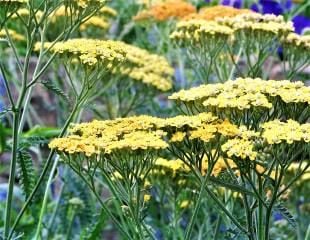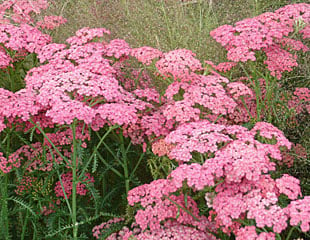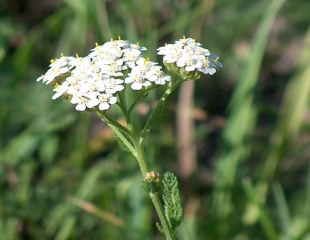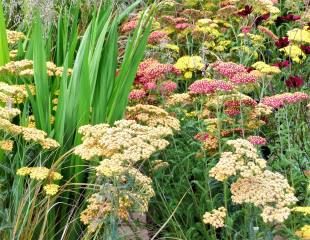
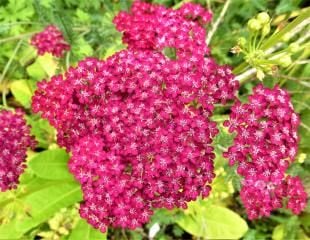
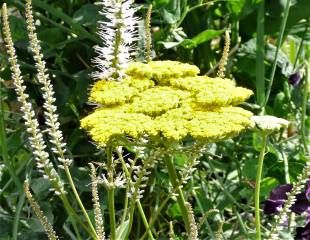
How to Grow Achillea
Achillea is a summer flowering herbaceous perennial which flowers from June to September. Each flower head comprises hundreds of tiny flowers which are long lasting. Although often referred to by its common name Yarrow, this really refers to Achillea millefolium which is a white variety seen growing wild and illustrated below. The foliage of Achillea is attractive, light, feathered and a little like dill foliage in appearance. The foliage varies in colour from green to grey green, depending on the variety. Because Achillea is herbaceous, it does back over the winter to bare earth.
Achillea has a wide colour range, from the subtle shades in the image top left, ranging to bold coloured Achillea such as A. 'Golden plate' which is a strong bright yellow image far right and A. 'Cerise Queen' centre image.
Achillea is generally pest free. In the long term, Achillea often runs out of steam after about three to five years, especially on heavier soils. You can replenish stocks by taking cuttings, potting them, and growing them in gritty compost until they are large enough to plant out in the borders. Achillea are not keen on heavy wet soils and it is best to defer planting out any small plants until the spring to avoid the winter wet. You can also divide to extend the life of the plant. Achillea are fully frost hardy all over the UK.
Where to plant Achillea
All Achilleas are easy to grow, requiring no special attention except planting in the right place and sometimes staking, particularly the taller varieties. Achillea grows best in full sun, the more sun the happier the plant, and those varieties with grey foliage prefer the most sun. If the soil is heavy clay/on the wet side, it will help to introduce some grit to improve drainage. Achillea is a short-lived perennial which will need replacement. Despite their lack of longevity, Achillea mix so well with many other great garden plants they are well worth growing, and they self seed.
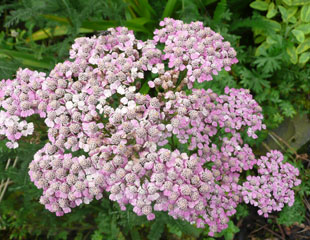
Achillea belong to a very useful group of plants whose flowers look good as they fade. In the image above centre, this variety of Achillea started blooming in a strong pink and fades to a delicate shade, image left.. This means that Achillea flowers continue to look good in the border for many weeks and blend well with grasses and late blooming summer flowers.
Ideally, to prolong flowering, it is recommended to dead head Achillea, but it is tempting to leave the flowers on the plant because they look so good as they fade.
The only slight downside to growing Achillea is , perhaps, their smell is not particularly floral. It is not very strong and you have to get up close to smell the flowers but they are a bit "catty".
Ideas for other summer flowering plants

Achillea are easy to grow and maintenance free. They will return and flower well each year although a shorter lived perennial.
Planting combinations for Achillea
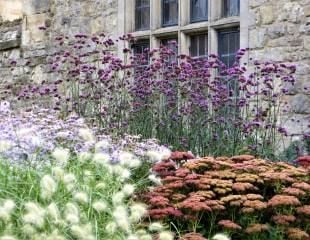
Achillea 'Walter Funke' mixed with tall purple of verbena bonariensis and fluffy grasses, likely to be a Pennisetum. This combination was growing in an Oxford college garden, and looking good in late summer.
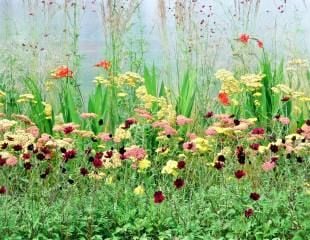
Mixed shades of Achillea with dark red chocolate cosmos (not fully hardy) , the grass Molinia and red swords of Crocosmia just coming into flower.
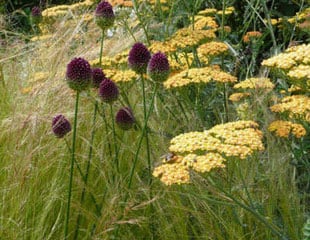
This is a lovely summer combination. Achillea 'Terracotta',and the grass Stipa tenuissima. This is teamed up with the late summer flowering Allium sphaerocephalon (distinguished from the spring flowering Alliums).

